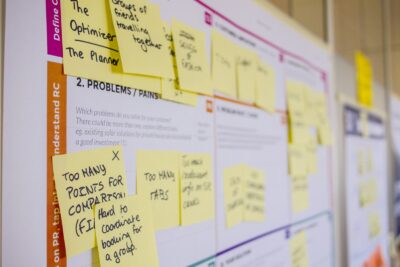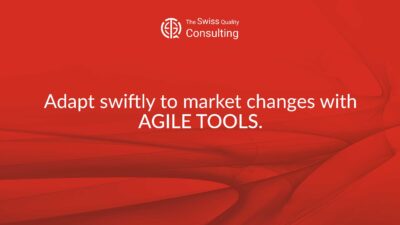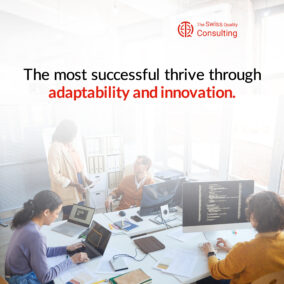Embracing Change with Agile Methodology
The Core Principles of Agile Methodology
The integration of Agile methodology for changing requirements into project management processes represents a significant shift towards flexibility and adaptability in development cycles. Agile methodology, unlike traditional project management approaches, is designed to embrace change, even late in the development process. This capability is particularly valuable in regions like Saudi Arabia and the UAE, where rapid technological advancements and dynamic market conditions demand a flexible and responsive approach to project management.
Agile methodology is based on iterative development, where requirements and solutions evolve through collaboration between self-organizing cross-functional teams. This approach ensures that projects can adapt to changing requirements, providing stakeholders with continuous delivery of valuable products and services. In cities like Riyadh and Dubai, where business environments are highly competitive and constantly evolving, Agile methodology enables organizations to respond quickly to new opportunities and challenges.
Moreover, Agile promotes a culture of continuous improvement, encouraging teams to regularly reflect on their processes and make adjustments as needed. This focus on iterative progress and constant feedback helps ensure that projects remain aligned with business goals and customer needs. By adopting Agile methodology, organizations in Saudi Arabia and the UAE can enhance their ability to manage complex projects, reduce time-to-market, and increase overall project success rates.
Handling Changing Requirements in Agile
One of the key strengths of Agile methodology is its ability to handle changing requirements efficiently. Traditional project management approaches often struggle with scope changes, leading to delays, cost overruns, and compromised project outcomes. Agile, on the other hand, embraces change by design, allowing teams to adjust their priorities and plans as new information emerges.
In Agile projects, requirements are documented as user stories, which are concise descriptions of desired functionalities from the perspective of end-users. These user stories are prioritized in a backlog, which is continuously refined and reprioritized based on stakeholder feedback and changing market conditions. This approach ensures that the most valuable features are developed first, providing maximum value to stakeholders at every iteration.
Furthermore, Agile frameworks such as Scrum and Kanban include regular review and planning sessions, such as sprint reviews and backlog grooming sessions. These meetings provide opportunities for stakeholders to provide feedback and for teams to make necessary adjustments to their plans. This iterative process allows for the seamless incorporation of changing requirements, ensuring that projects remain relevant and aligned with business objectives.
Leveraging Agile for Business Success
The Role of Leadership in Agile Adoption
Effective leadership is crucial for the successful adoption of Agile methodology. Business executives, mid-level managers, and entrepreneurs play a pivotal role in fostering a culture that supports Agile principles and practices. By promoting transparency, collaboration, and continuous improvement, leaders can ensure that their organizations are well-prepared to embrace Agile and manage changing requirements effectively.
In regions like Saudi Arabia and the UAE, where the pace of business is fast and competition is intense, leaders must be proactive in driving Agile adoption. This involves providing training and resources to teams, establishing clear communication channels, and creating an environment that encourages experimentation and learning. By empowering teams to take ownership of their work and make decisions autonomously, leaders can enhance the agility and responsiveness of their organizations.
Moreover, leaders must be committed to the principles of Agile, demonstrating their support through their actions and decisions. This includes being open to feedback, encouraging cross-functional collaboration, and prioritizing customer value above all else. By leading by example, executives and managers can inspire their teams to embrace Agile and achieve greater business success.
Case Studies: Agile in Action
Several case studies highlight the effectiveness of Agile methodology in managing changing requirements and achieving business success. For instance, in the tech industry, companies that have adopted Agile have reported significant improvements in project outcomes, including faster delivery times, higher customer satisfaction, and increased team morale. These successes demonstrate the tangible benefits of Agile methodology in dynamic and fast-paced environments.
In Saudi Arabia, Agile methodology has been successfully implemented in various sectors, including technology, finance, and healthcare. Organizations that have embraced Agile have seen improvements in their ability to innovate, adapt to market changes, and deliver high-quality products and services. Similarly, in Dubai, Agile has enabled businesses to respond quickly to new opportunities and challenges, supporting the city’s vision of becoming a global hub for innovation and entrepreneurship.
These case studies underscore the importance of continuous learning and adaptation in Agile projects. By regularly reflecting on their processes and making incremental improvements, organizations can enhance their agility and resilience, ensuring long-term success in a rapidly changing world.
Conclusion: Building a Flexible and Adaptive Future with Agile Methodology
The integration of Agile methodology for changing requirements into project management practices represents a significant advancement in ensuring flexibility and adaptability in development cycles. By embracing change and prioritizing continuous improvement, Agile enables organizations to manage complex projects effectively, respond to dynamic market conditions, and deliver maximum value to stakeholders. In regions like Saudi Arabia and the UAE, the adoption of Agile methodology demonstrates a commitment to innovation, resilience, and business success.
Effective leadership and collaboration are essential for the successful implementation of Agile. By fostering a culture of transparency, collaboration, and continuous improvement, business executives, mid-level managers, and entrepreneurs can ensure that their organizations are well-prepared to embrace Agile and manage changing requirements efficiently. The continuous evolution and integration of Agile practices will play a crucial role in building a more flexible and adaptive future, where organizations can thrive in the face of uncertainty and change.
—
#AgileMethodology, #ProjectManagement, #FlexibilityInDevelopment, #ModernTechnology, #AIinProjectManagement, #SaudiArabia, #UAE, #Riyadh, #Dubai, #BusinessSuccess, #Leadership























